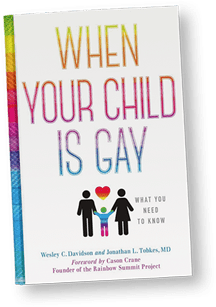The purpose of National Coming Out Day is to support those in the LGBT Community. According to the February 17, 2022 Gallup poll, LGBT identification in the United States had ticked up from 5.6% in 2020 to 7.1%, driven by the younger generation. One in five Generation Z adults now identify as LGBT.
In 2021, The Human Rights Campaign estimated that there are 16 million people in the United States. The U.S. Transgender account for two million or one in ten. The LGBT population is so common that one out of two Americans has someone close to them who is gay or lesbian.
Yet the issues that the LGBT population face are still evident despite gay marriage legalized in 2017 in all fifty states yet trying to be rescinded along with many other laws. Conversion or reparative therapy is still legal in twenty states.
Coming Out: A Practice that Doesn’t Die!
But one issue that has remained constant is the coming out to a parent. It’s still a role reversal with the child perceived as “in charge” when they come out. Why? The LGBT child will end up educating his parents, siblings and others.
One parent is often more accepting than the other; the child may tell one parent first, often mother, and asked not to tell the other parent until it’s time to share the news.
How many parents react:
- Shock, denial and calling orientation/identity a “phase,” refusal to accept child’s self-knowledge.
- Holding out hope, e.g. if the child comes out as bisexual, parents may hold onto the idea that maybe their child will change his mind or still have the privilege of appearing “straight” if they fall in love with the opposite sex.
- In anger and confusion, the parent may blurt out inappropriate, hostile remarks.
- Guilt, responsibility: Did I pass on “gay gene” or encouraged “gendered” pursuits (e.g. artistic, athletic, etc.).
- Worry, fear for safety of child due to homophobia, violence, prejudice in workplace and communities.
- Mourning loss of image of “traditional” heterosexual marriage, biological grandchildren(?) and easier life for heterosexuals.
Here are some family tips for being an Ally to help YOU come out of the closet:
- Employ the 3 L’s: Listen, learn, and love.
- Keep the dialogue going. It’s never too late to move toward increased support.
- Believe that your child/family member knows who they are.
- Acknowledge and apologize for initial struggles (if blurted inappropriate about family member being LGBT).
- Watch for signs of harassment, bullying and discrimination and advocate when appropriate..
- Ask child/family member whom he/she/they wants you to tell and ask permission to share if you need support too.
- Welcome LGBT child’s friends into your home.
- Require that family members respect your LGBT child’s identity.
- Show interest in LGBT child’s dating life, just as you would your cisgender sibling.
- Support your LGBT child’s identity even if you are still working to understand or be comfortable with it.
- Seek out LGBT specific community resources and support yourself with organizations such as PFLAG (Parents for Lesbians and Gays and now Transgenders), and therapists who are preferably LGBT themselves.
From: When Your Child Is Gay: What You Need To Know (Sterling: 2016) by Wesley C. Davidson and Jonathan L. Tobkes, M.D.

When Your Child Is Gay: What You Need To Know
For more detailed advice, see book, co-authored with a mother of a gay son and a psychiatrist, Jonathan L. Tobkes, M.D.